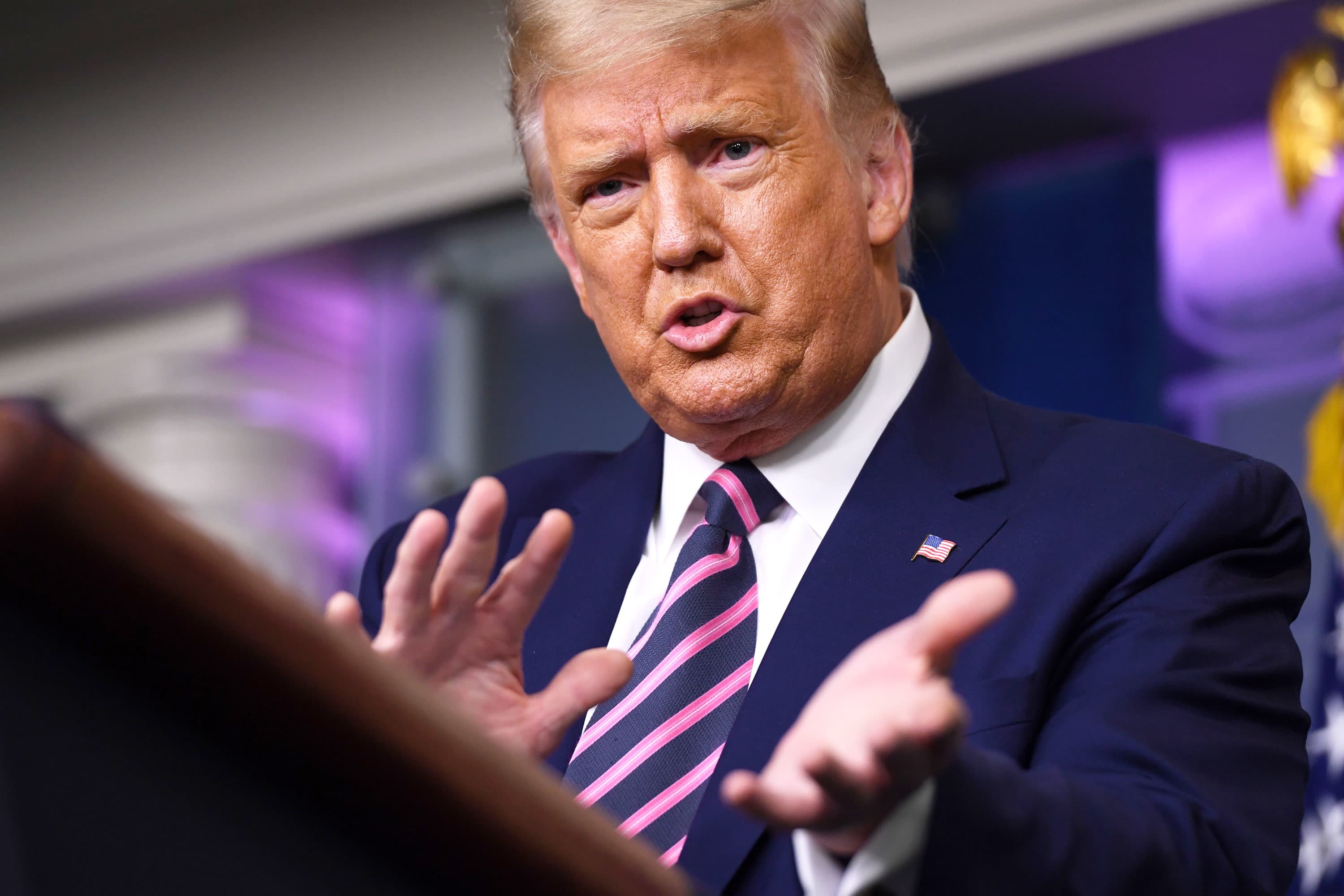Ginsburg vacancy could tilt Supreme Court to Trump in potential Bush v. Gore repeat

The death of Supreme Court Justice Ruth Bader Ginsburg on Friday seemingly shifted everything about the 2020 race between President Donald Trump and Democratic nominee Joe Biden overnight, turning the focus of the race from Covid-19 to the future of health care, reproductive rights and the nation’s gun laws.
Ginsburg’s death has the potential to affect the race in a more direct way, too.
According to election law experts, this year’s presidential election already posed a uniquely high risk of ending up at the Supreme Court, thanks to a tsunami of litigation over state efforts to adjust voting to the global pandemic.
With Ginsburg’s death, the liberal minority on the panel has shrunk to just three members. If an emergency case between Trump and Biden splits the court along partisan lines this fall, Trump is almost certain to emerge the victor. Even if Chief Justice John Roberts, an occasional swing justice, joins the liberals, that would mean a 4-4 tie, leaving in place whatever ruling was issued by the lower court.
“Under those scenarios which were resolved by Chief Justice Roberts joining with the four liberals in a case about the election, those scenarios don’t end the same way,” said Nathaniel Persily a democracy scholar at Stanford Law School and co-founder of the Stanford-MIT Project on a Healthy Election. “The loss of Justice Ginsburg moves the median vote on the Supreme Court to the right.”
The 8-member court raises the chances of a split verdict on a blockbuster election case, a possibility that would seem to fit in during a year that has already showcased a worldwide health crisis and a once-in-a-generation impeachment battle.
The possibility also dramatically increases the importance of which court hears the case before the Supreme Court does, given that a tie among the justices would leave that court’s ruling standing.
Election lawyers are already gaming out the dizzying possibilities. For instance, Persily noted, a case stemming in the crucial battleground of Pennsylvania could theoretically be heard either by the Pennsylvania Supreme Court or the 3rd U.S. Circuit Court of Appeals, based in Philadelphia. Democrats hold a majority on the state court; on the federal appeals court, Republicans do.
Already, more than 300 elections cases stemming from Covid-19 have been filed around the country, according to a Stanford-MIT tracker. Those cases are disproportionately being waged in states like Pennsylvania, whose voters are likeliest to decide the election outcome. Both the Trump and Biden campaigns have signaled that the legal fights over the race are a top priority.
Just last week, Biden unveiled a sprawling new legal operation within his campaign that enlisted the help of two former solicitors general, Donald Verrilli Jr. and Walter Dellinger, and hundreds of other lawyers. The Republican National Committee and the Trump campaign have pledged $20 million in spending on legal battles.
The electoral significance of the Supreme Court, combined with the cramped timeline before Election Day, has forced Washington to fight over Ginsburg’s replacement even as mourning just begins.
Trump has pledged to move “without delay” to name and confirm a successor, suggesting his choice will be a woman. Biden has said any new nominee must be named after a new president is elected, reportedly in line with Ginsburg’s own last wishes.
Adding a conservative justice to the court would give the GOP 6-3 majority, lending it an upper hand not just in election litigation but also for the foreseeable future on the gamut of social and business issues the court decides each year.
Whether Trump is able to get a new justice confirmed before Election Day remains to be seen though, and could turn on decisions by the Senate’s moderate Republicans, among them Susan Collins of Maine and Mitt Romney of Utah. The GOP has a 53-seat majority in the chamber, meaning the party can withstand up to three defectors.
With the election taking place in just 44 days, the calendar is only getting tighter. On average, it takes about 70 days for a Supreme Court justice to receive a final vote in the Senate after being nominated, according to the Congressional Research Service. Among the justices on the court now, none received a vote within 60 days.
The fighting over whether a new justice should be confirmed to the bench adds to months of increasing tension about the legitimacy of the Supreme Court itself.
Democrats, angered by Senate Majority Leader Mitch McConnell’s refusal in 2016 to hold hearings on former President Barack Obama’s last Supreme Court nominee, Merrick Garland, have threatened to increase the size of the top court from nine members, or pursue other structural reforms.
McConnell’s eagerness to hold a vote on Trump’s election year nominee, a seeming break with his 2016 line in the sand, has only further energized those on the left. The Kentucky Republican has claimed that the difference between 2020 and 2016 is that, this year, the same party holds the White House and Senate.
Even before Ginsburg’s death, both Biden and Trump had said that they expected the other side to attempt to win the election unfairly. Trump has claimed that Democrats would attempt to “rig” the race via mail-in voting, a subject of much litigation, while Biden has warned that Trump would “try to steal” the election. Experts have said that the president’s claims about widespread voter fraud are baseless.
Given the context, Persily said that if the Supreme Court ends up “in a position this year like it was in Bush v. Gore, you should not expect the litigants to accept the result if they are on the losing end.”
“The court might not be the last word,” he said.




